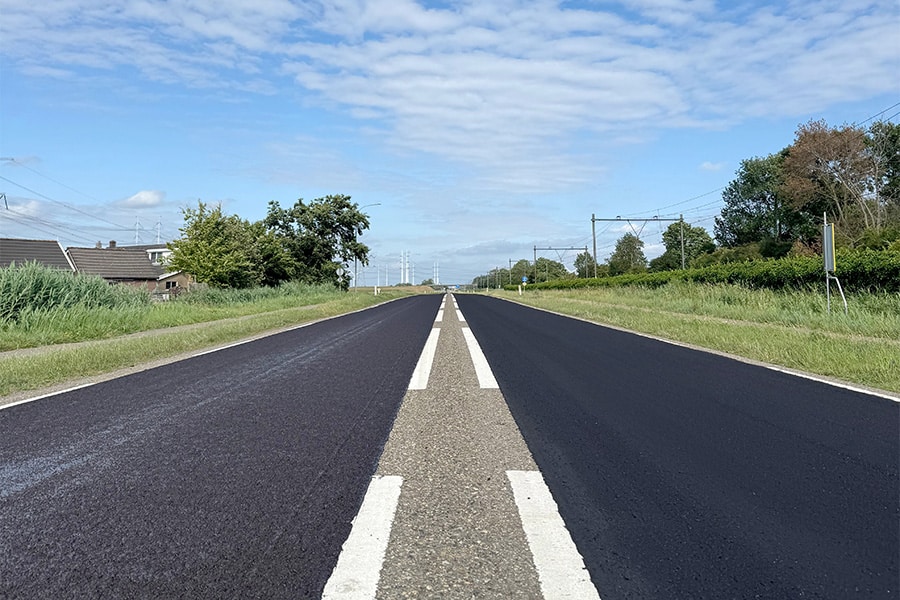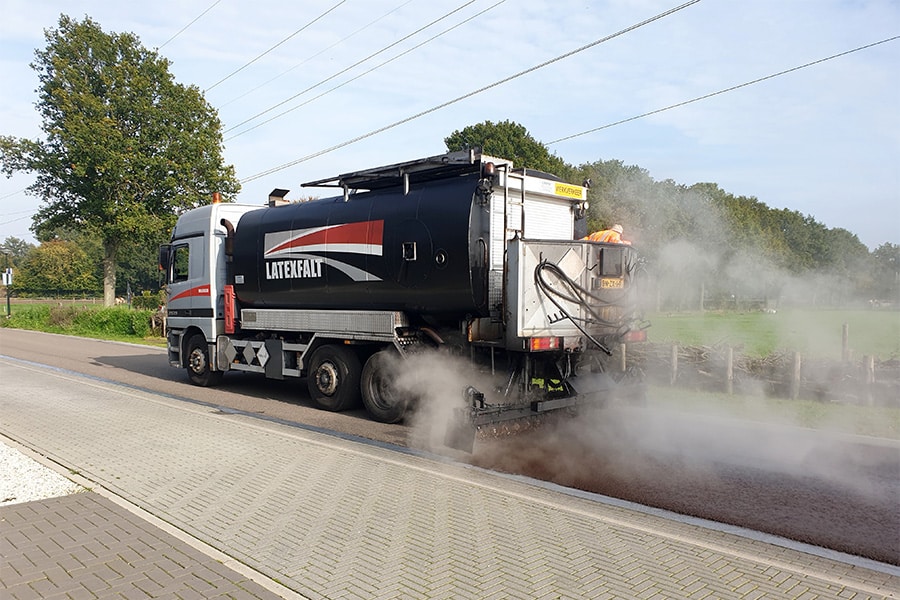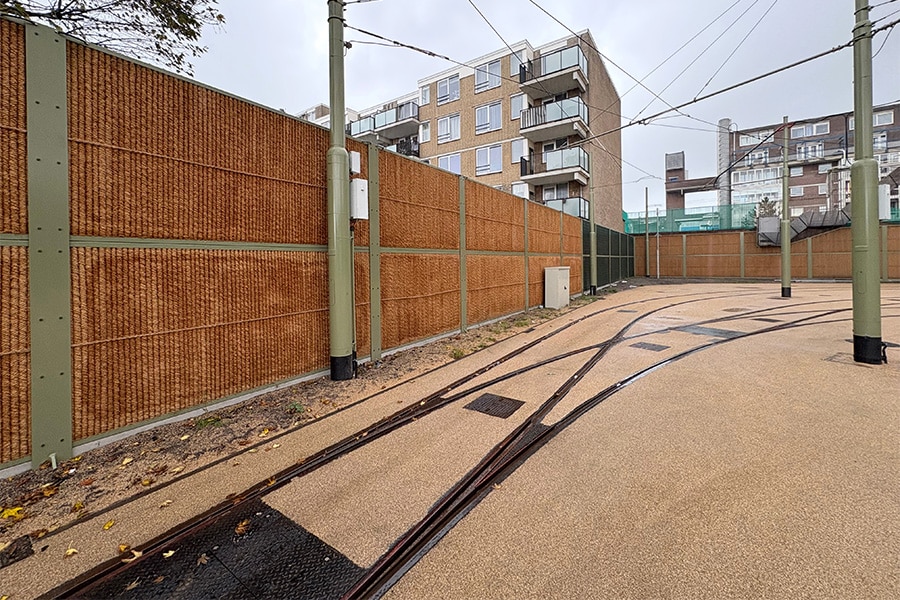
Many specialized foundation structures
First for 'concrete on roll' and vertical reinforcement system
For five years, Joosten Concepts and Bonneveld Gewapende Grondconstructies acted as joint partners in Aanpak Ring Zuid to realize, among other things, 130,000 m3 of EPS structures and various pile mattresses and reinforced soil structures according to the OLA principle. In addition, many 'specials' due to the geotechnical complexity and integrality of the constructions. Another special feature is that EPS from various temporary bypasses has been reused in the project and that for the finishing of a number of structures 'concrete on rolls' has been applied for the first time.
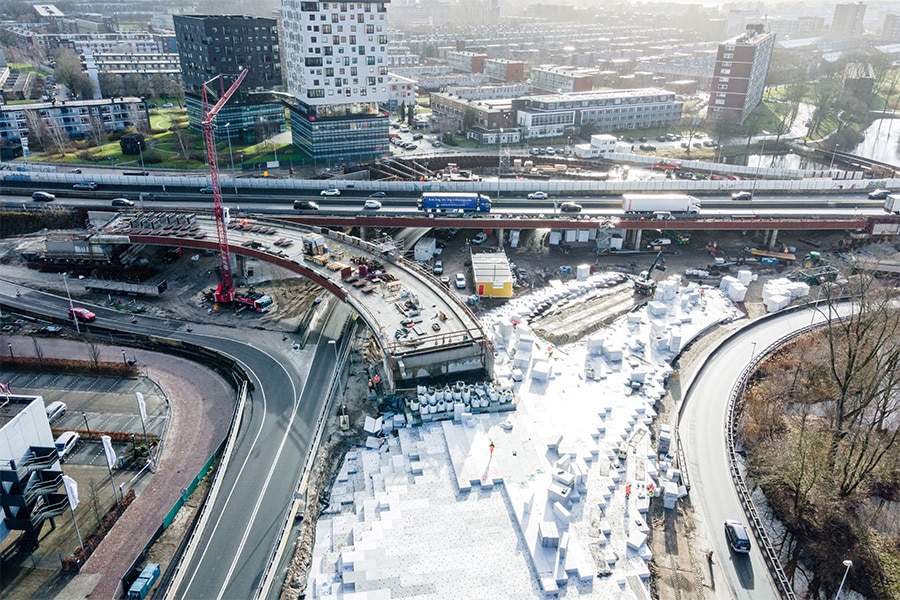
Bonneveld Armed Ground Constructions has been involved in Aanpak Ring Zuid since 2017. "Due to the subsoil being prone to settlement, there was a need for more load-bearing capacity at a large number of locations," says Leon van der Heiden of Bonneveld Armed Ground Constructions. "Because of time, speed and scalability, EPS was chosen. Pretty soon it turned out that the quantities were huge. Hence, starting in 2019, we continued the project together with Joosten Concepts according to the OLA principle." OLA stands for design, supply and application. "With our club of specialists, we assisted Combinatie Herepoort in the design of the lightweight embankment construction, settlement-free foundation structures and various earth retaining structures, in supplying the necessary materials and in applying them through our partner Bonneveld," says Bob Boonzaaijer of Joosten Concepts. Together with Leon, he zooms in on the highlights.
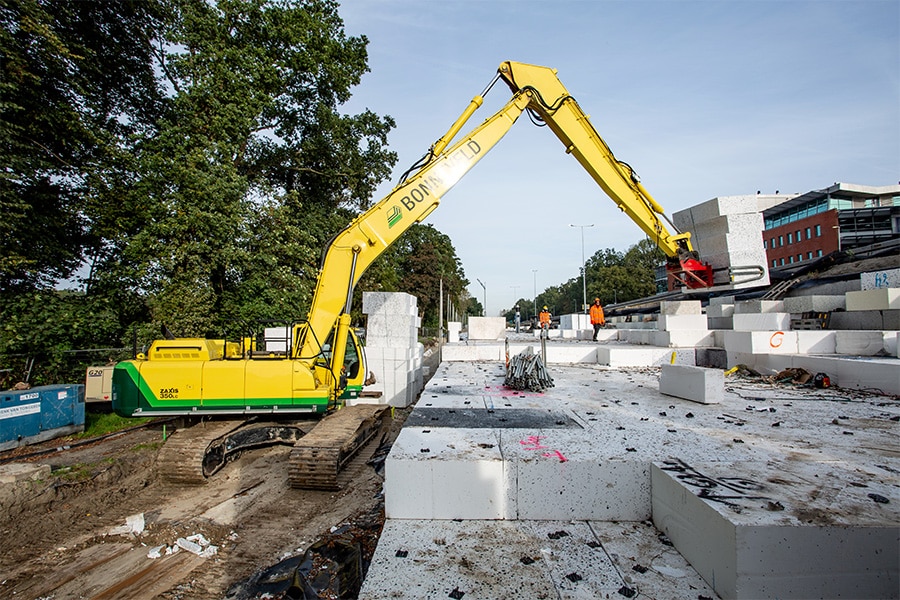
Vertical reinforcement system
Approach Ring South in split into four clusters. In three of the four clusters, soil improvement with EPS was applied. "The biggest subproject for us was cluster 1, the N370 near the Vrijheidsplein, for which a temporary bypass was also constructed on EPS," says Leon. "Here the total EPS construction was applied in 27 phases. This phasing was necessary to guarantee passage at Vrijheidsplein. EPS is extremely suitable for this, because you can build vertical walls with it. In many of those phases, the EPS therefore had to be attached to EPS structures that had already been applied."
Bob adds: "To connect those vertical phases, Joosten Group's Vertical EPS Reinforcement System (VEW) was used. This means that an EPS structure does not have to be stacked by any extensions on the job. And this saves considerable time and space in execution."
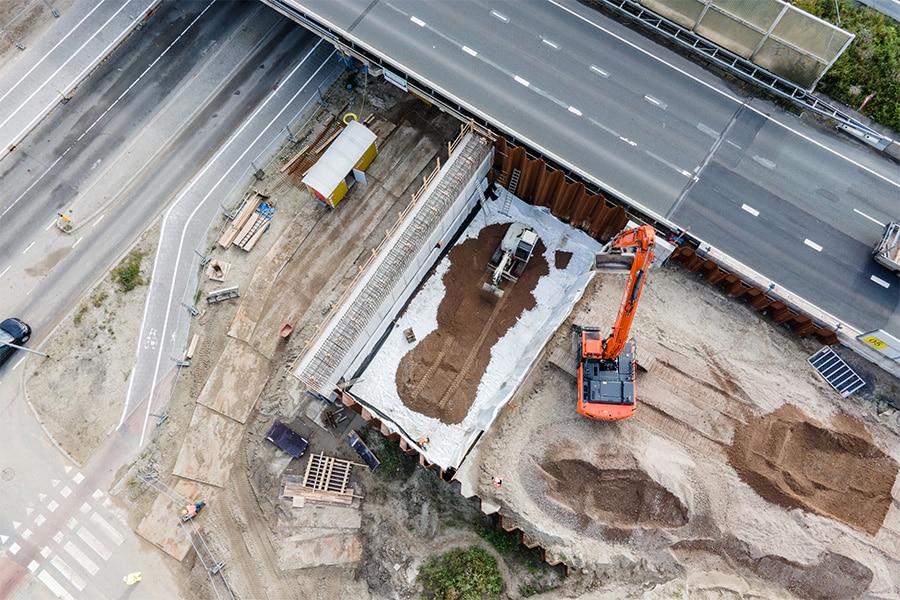
Concrete on a roll
Following the OLA principle, Joosten Concepts, together with partners, designed the EPS construction for each phase of the project and prepared the laying plans. Other EPS structures in cluster 1 include the transition structures of the abutments to the earth track of KW-06 at the city park and the connection to the flyover to the A7. In addition, geogrid-anchored retaining walls on EPS were used so that they could be executed more efficiently and would not slide on the structures, and the bases of the aesthetic screens were founded on heavier compressive strength EPS. For all temporary situations, reinforced soil was realized on the EPS structure to temporarily enclose the road construction. And the vertical walls were clad in a number of positions with Concrete Canvas® GCCM, like concrete on a roll. "Several options were reviewed for the finish, including geotextile and precast concrete walls, but due to scale, location and material costs, both options were quickly rejected," Bob knows. "We proposed an alternative in the form of Concrete Canvas® GCCM. It offers both the flexibility of a geotextile and the strength of conventional concrete, while protecting against UV degradation, fire resistance and vandalism. In addition, it can be applied extremely quickly. In just two weeks, 1,200 m2 of Concrete Canvas® GCCM was processed."
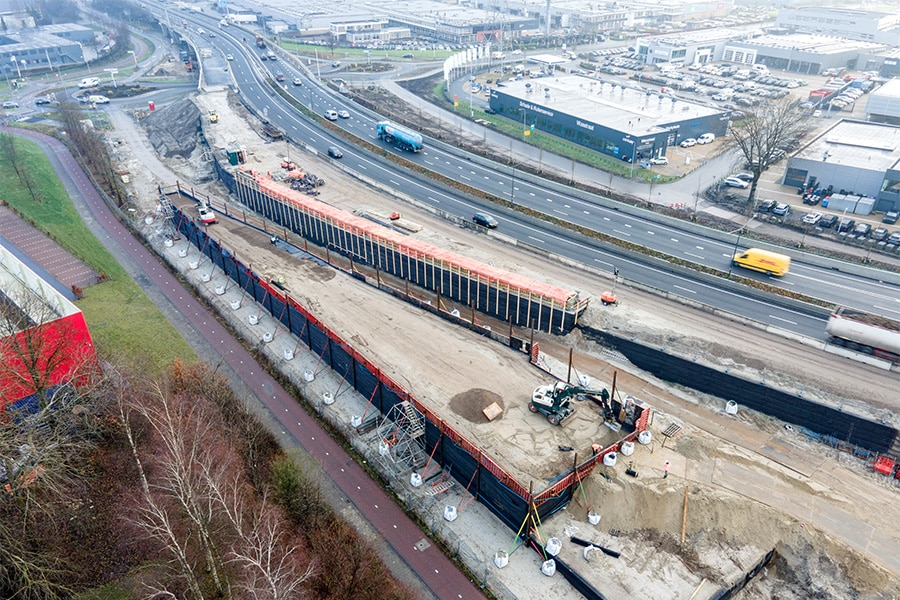
Pile mattress and foundation reinforcement
Furthermore, in cluster 1 another pile mattress with reinforced soil was realized at the Laan van de Vrede. "In this way, a settlement-free transition construction was obtained between abutments and the existing earth track for the widening of the existing structures/viaducts," Bob explains. "In all phases where the road construction on EPS was applied, foundation reinforcement was used. Due to better distribution of forces in the foundation of the road structures due to traffic, Tensar Triax geogrids were used to optimize the EPS type. This has great financial advantages." Finally, the realization of the widening of the N370 in cluster 1 required a temporary traffic bypass. "Due to the weak soil conditions, EPS was also chosen here," says Leon. "Due to lack of space, we also executed vertical walls in EPS here. In the final situation, these are stacked to create a slope with tree sections and soil for grass cover. We did this stacking at several locations, such as Leonard Springerlaan and near the Mercure hotel. The released EPS was applied again in the N370 for the final situation."
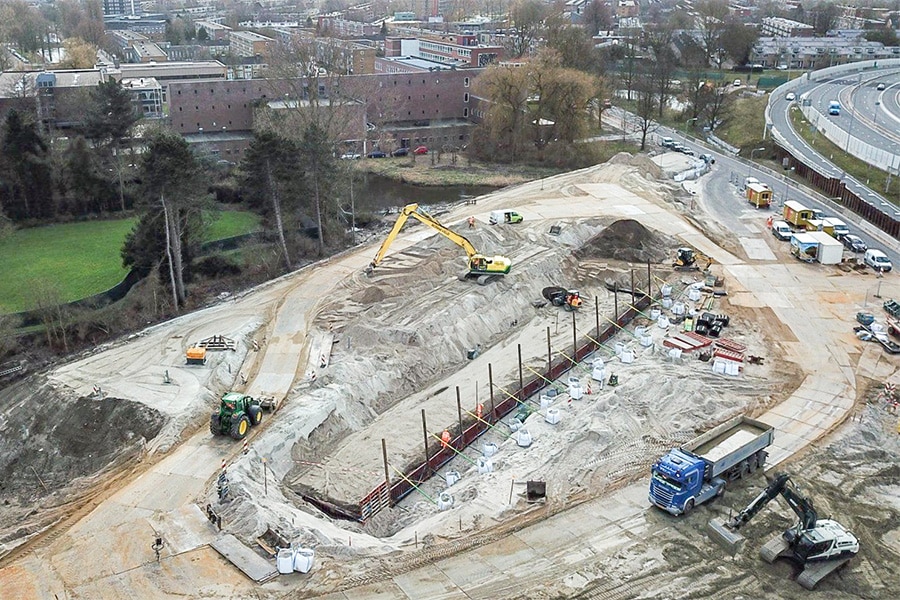
Flower parades
Cluster 2 at Julianaplein is also characterized by temporary and final reinforced soil structures. "For the final situation, we built up to 8 meters high steep walls here in three phases," says Leon. "This was carried out over several years because of the different functions during the project.
And often carried out in 24-hour shifts to minimize disruption to the surrounding area." A temporary structure was also built in cluster 2 to divert traffic, giving the combination room to realize the Julianaplein intersection on both sides of the temporary viaduct. "A considerable amount of EPS was also used for this temporary structure TGK-08, including for the enclosure of the road structure," Bob continues. "The abutments of the temporary bridge were also constructed in EPS with reinforced soil. This EPS was released at the last minute on the project and thus could not be reused elsewhere in the project. As a result, a lot of EPS went to local carnival clubs and flower parades."
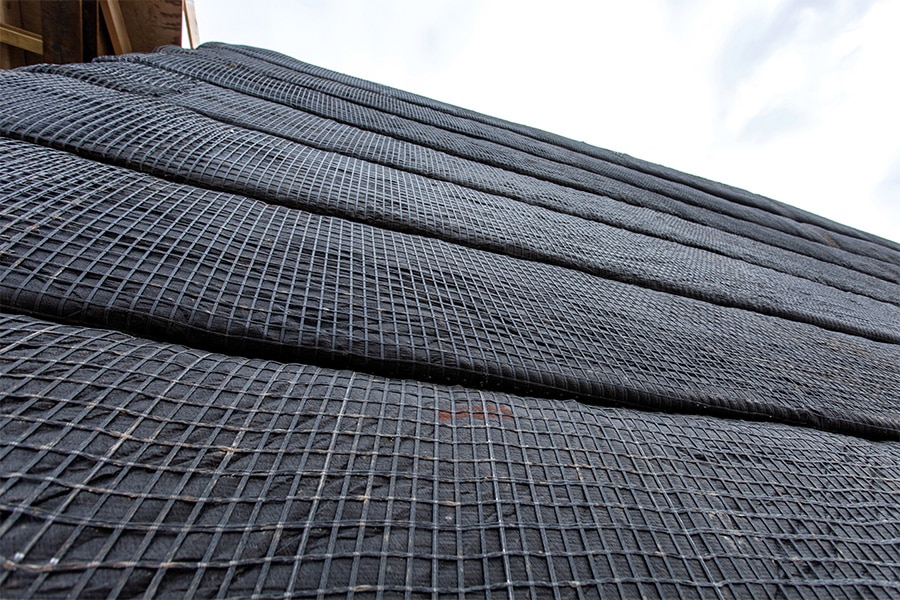
Heeft u vragen over dit artikel, project of product?
Neem dan rechtstreeks contact op met Bonneveld BV.
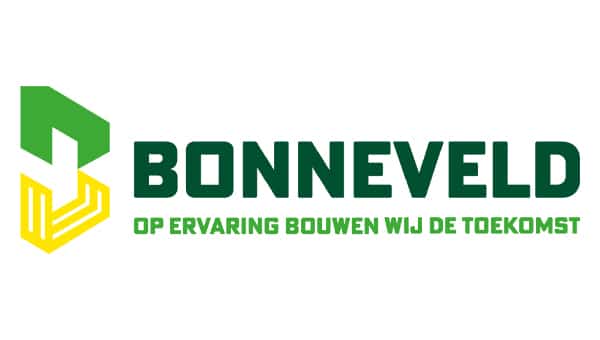 Contact opnemen
Contact opnemen
